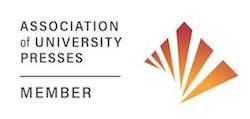Today, we are happy to bring you our conversation with Kathleen James-Chakraborty, Katherine M. Kuenzli, and Bryan Clark Green, authors of The Belgian Friendship Building: From the New York World's Fair to a Virginia HBCU:
What inspired you to write this book?
Each of the authors came to this project with their own motivation. Bryan was involved in preservation efforts at Virginia Union University, including the restoration of the Belgian Friendship Building, which is in grave need of preservation. Kathleen was drawn to the building through her family history in Richmond and interest in the Civil Rights Movement. She also recognized the building’s importance as the first example of modern architecture on any U.S. college campus. Katherine has worked on Henry van de Velde, who determined the form the building took as the Belgian Pavilion for the 1939 New York World’s Fair. Our interests converged in 2020, when we all felt compelled to recover the agency of the Black protagonists who shaped the building in Richmond.
What did you learn and what are you hoping readers will learn from your book?
Beyond expanding the purview of modern architecture in the 1930s through the 1960s, the challenge and interest of the book lies in bringing together two very different—even opposing—stories, that of Belgium, a European colonial power, and that of an HBCU under the leadership of its first Black president. Whereas its first patrons promoted Belgium’s economic and colonial interests, its second owners expanded Virginia Union’s curriculum to enable advanced studies in the liberal arts and sciences. Whereas its first builders were racist, its ultimate owners worked to abolish Jim Crow and to advance civil rights for African Americans. The building therefore presents a series of contradictions and shows how divergent goals can coexist within the same form.
What surprised you the most in the process of writing the book?
The biggest surprise was to discover how the reigning account of the building—long celebrated as a “gift” of a colonial power to an HBCU—represented a flat out lie. Belgium in fact sold the building to Virginia Union, as it did not have the means to dismantle its pavilion upon the New York World’s Fair’s closure. In 1940, Belgium’s government was divided between a government-in-exile that had fled to London and a civil administration in Belgium under German military occupation. Amidst this chaos, a free-wheeling government administrator devised a plan to sell an impermanent structure as a permanent building to generate funds. It is even more impressive, then, to see how Virginia Union transformed the building into a beacon of the Civil Rights Movement.
What’s your favorite anecdote from your book?
Here are some impressive facts: Martin Luther King delivered no fewer than five speeches in the Belgian Friendship Building beginning in 1956. It served as an induction center for the U.S. Army during World War II, receiving both white and Black soldiers for active duty at a time when the Armed Forces were racially segregated. Finally, its tower, named the Robert L. Vann Memorial Tower, is the highest monument to an African American. It was named in 1941 in honor of the influential Black newspaper editor of the Pittsburgh Courier, one of the two largest-circulating African American newspapers of its day. This tower remains one of Richmond’s most recognizable buildings, enduring longer than the monuments to Civil War generals that once lined Richmond’s Monument Avenue.
What’s next?
This book is part of a European Research Council (ERC) Project “Expanding Agency: Women, Race, and the Global Dissemination of Modern Architecture,” awarded to Kathleen and hosted by University College Dublin’s School of Art History and Cultural Policy. This five-year research project (2022-2026) explores the roles that women and members of ethnic minorities played in transmitting modern architecture and design internationally between 1920 and 1970 (see expanding-agency.com). Next up for Katherine is a book-length project on the German American artist and designer Anni Albers, including a forthcoming article on her 1949 solo exhibit at the Museum of Modern Art. Bryan Clark-Green has multiple projects and teaching-related activities related to historic preservation and adaptive reuse in his private practice and at Virginia Commonwealth University.




